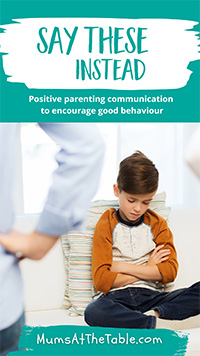Positive behaviour support is a gentle approach that will encourage a positive change in your child’s behaviour—and it doesn’t involve time-outs or punishments.
Positive behaviour support (PBS) is a comprehensive and customised approach intentionally designed around a child’s specific needs. While often used with children experiencing behavioural challenges, it can be beneficial for all children as it helps to remove things that could trigger, encourage or reward negative behaviour. It can also help children learn new positive behaviours to replace inappropriate ones that could become potential issues in the future.
Children are constantly learning new skills and exposed to various forms of behaviour. While most are normal and healthy, there can also be problematic ones that your child may start to practice or use. This is where PBS can be a great parenting tool to improve a child’s social and communication skills, by reinforcing what is and isn’t acceptable behaviour.
Read on as we give you some practical examples on how you can incorporate PBS principles into your everyday parenting.
What is positive behaviour support?
Positive behaviour support appeared in the 1980s, emerging from applied behaviour analysis (ABA). Applied behaviour analysis is based on a behavioural psychology learning theory. It denotes how a person receives, processes and retains knowledge. It focuses on two main ideas:
- human behaviour is influenced by events or stimuli in the environment
- behaviour that’s followed by positive consequences is more likely to happen again
In keeping with these two key ideas, positive behaviour support seeks to support children by giving them positive consequences for new behaviour. By teaching, reinforcing and rewarding positive behaviour, children are encouraged to repeat the behaviour. It also helps them to think logically from cause to effect.
As with all behaviour, what a child displays is expressed to serve a purpose. Therefore, children learn what kinds of behaviours are going to serve a healthy and positive purpose and in contrast, which behaviours will not be rewarded.
How does positive behaviour support work?
Positive behaviour support seeks to identify where a problem behaviour came from and how it can be replaced with a more positive alternative. Older children can learn new behaviours by setting goals for themselves and tracking their progress, and working toward becoming more resilient and independent each day.
The main goal of positive behaviour support is to help children find healthy and productive ways of functioning and interacting. This will ideally set them up for productive long-term personal and social wellbeing. Positive behaviour support doesn’t just focus on specific problems—it helps kids understand the reasons behind why they’re experiencing certain problems. This then makes it easier for them to maintain self-control and think logically during a challenging moment.
It also focuses on equipping children with a better understanding of how their actions affect other people, rather than just thinking about their own feelings. The evidence-based approaches also encapsulate effective communication training, to help children to be able to interact with others positively.
Incorporating the principles of positive behaviour support in everyday life
Positive behaviour support plans are often used for children who display challenging behaviours. It is also suitable for autistic children and individuals on an NDIS plan. However, while PBS plans require trained practitioners to design because they are customised to meet a child’s needs (more on that later), there are some practical PBS principles that parents can adopt as well:
1. Teach your child what is good behaviour, rather than what is wrong behaviour
For example:
“Use walking feet around the pool.” instead of “Don’t run around the pool.”
“Please use your quiet voice.” instead of “No yelling.”
“We use our hands for playing, eating and hugging.” instead of “Don’t hit.”
2. Communicate effectively and with empathy to your child so they feel heard and understood
For example:
“I noticed how hard you tried tying your shoelaces. It was excellent to see the effort you made. Next time if you’re starting to get frustrated you can always come to me for help. I’m here for you and it will help you not to get big angry feelings and feel like throwing your shoes.”
instead of
“That was ridiculous behaviour. You don’t just go throwing your shoes around the house because you can’t get the laces done up. Next time ask for help before you throw a fit.”
3. Providing clear, concise and specific feedback
We all like to receive feedback on our work. We like to know if we are on the right track, what our strengths are and where we need to improve. Children want and deserve the same.
For example:
“I was so proud of you for taking a moment when your little brother was annoying you. I saw you trying to be patient and I thought to myself, What a fast learner you are! I think you did really well controlling your feelings today.”
instead of
“Thanks for being a good brother today.”
4. Setting clear and realistic goals and expectations for your child that they are aware of
When you are creating expectations for your child, they need to be aware of them, otherwise they will be caught off guard, get into trouble for things they didn’t know were required of them, and feel like they can’t meet your standard.
Some ways you can communicate clear expectations are by having a chore or to-do list which they also have involvement in making, setting screen time limits, and having a schedule that they are a part of, not just required to fulfil. Make sure every expectation is age and ability-appropriate.
5. Help prepare your child for change
If a plan, schedule or expectation changes, it’s best not to leave it to the last minute or let it come as a surprise to your child. If a swimming lesson has been cancelled, communicate it to your child as soon as possible. Your child may have made plans to meet their friend at the pool and they may be distressed and feel like things are out of control. The sooner you communicate changes to your child, the sooner they can mentally adapt and possibly reschedule things that are important to them.
6. Allow your child to make choices and encourage their independence
As children get older, start to give them appropriate opportunities to choose, rather than always choosing for them. This will help them develop a sense of their own identity and create a level of healthy independence.
For example:
- Taking your child to the clothing store and letting them choose some items for themselves, instead of you going by yourself and picking what you think they will like.
- Giving your child pre-chosen options (“Do you want an apple or an orange for school lunch?”).
- Asking for input in schedule setting (“Is there something you would like me to put into the diary for you at 4pm this Thursday?”).
7. Communicate and model what emotional regulation looks like (when you and your child are in a calm, happy mood)
Parents often only think about talking about emotional regulation with their child during or after their child has had an emotional outburst. This is not the ideal time for a lesson on emotional regulation when there is little emotional regulation happening practically. The best time to talk about managing emotions is when you and your child are happy and at ease with one another, which will allow you and your child to freely talk and ask questions.
Getting a positive behaviour support plan
While parents can incorporate many of the above principles of PBS into their everyday life, children who require additional help in changing their behavioural habits can receive them from behaviour support practitioners.
Trained practitioners will offer a person-centred approach and create a PBS plan specific to the support needs. A functional behaviour assessment will be created with the person’s quality of life and wellbeing as one of the key priorities.
If a child is showing challenging behaviours, the PBS plan will assess what those behaviours are, what is driving those problem behaviours, and what is the best behaviour management approach to reduce the difficult behaviour and support the learning of new healthy behaviours.
Positive behavioural support is available for children and young people under 18 years. PBS plans designed by practitioners start at a minimum of $1000. As they are often applied to neurodivergent children, they can be paid for with an NDIS plan.
Asking for help
If you are a parent wishing to engage services to help your child learn appropriate ways to conduct themselves, don’t think that that means you are incapable of teaching your child or that you are doing a terrible job. It takes a village to raise a child, but it also takes a village to raise a mum (or dad).
Seeking support for your child and yourself doesn’t mean you’re giving up, it means you’re refusing to give up. The support you are seeking for your child shows that you want the best for them and that you are willing to learn more effective parenting skills, to help them achieve the best childhood development outcomes.
More resources: Want to be a great parent? Read this

How helpful was this article?
Click on a star to rate it!
5 / 5. 4
Be the first to rate this post!
Adriana Wales
Related posts
Subscribe
Receive personalised articles from experts and wellness inspiration weekly!

